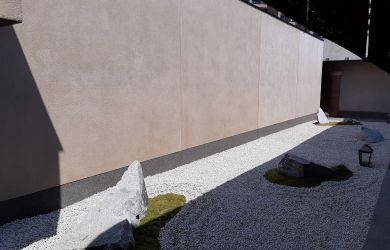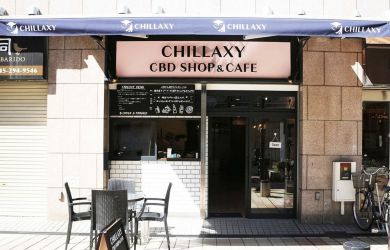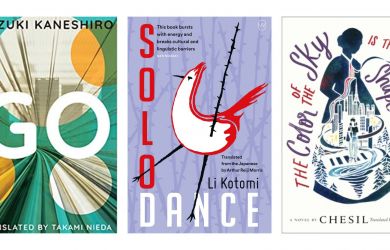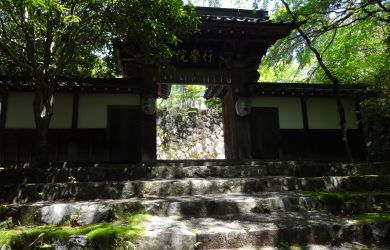
Originally published on metropolis.co.jp on December 2013
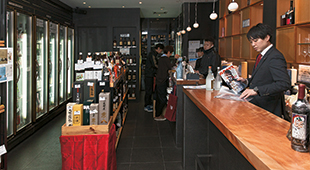
Staying in Japan over the holidays? For entertaining friends—or just yourself—here are some local drinks to liven up any table.
Sparkling sake is a great way to start off any night this holiday season. Some are exceedingly amai (sweet) while others are karakuchi (dry), so be sure to inquire before purchasing. Look for the nihonshudo (日本酒度), or Sake Meter Value, on the label. If it is a negative number, it’s sweet and the alcohol may be on the lighter side. While most sake is around 15-16% ABV, these may be as low as 4%—less than beer. The smaller bottles are better if you’re looking to do a toast and move onto something else, as the bubbles don’t usually last for long.
Ichinokura, from Miyagi prefecture, makes the fruity and sparkling Suzune (¥750, www.ichinokura.co.jp/syohin/t/suzune.html). Cloying and saccharine, the nihonshudo value is a whopping -90 (which is very rare). It’s also only 5% alcohol, making it perfect for a kampai. The slightly nigori (cloudy) sake should be turned ever so gently to incorporate the settled lees before opening.
Masumi in Nagano Prefecture brews the well-balanced Masumi Sparkling (¥5,000; www.masumi.co.jp/english/sparkling/) that has its second fermentation in the bottle, like champagne, thus producing fine bubbles. It’s aged for a year, which also helps to round it out.
Another great aperitif to start off any meal is umeshu, anzu or yuzushu, syrupy spirits made from plums, apricots or yuzu (Japanese citrus). Choya, an umeshu specialist, has its signature green bottle complete with plums inside that can be served with the drink. A unique treat is Choya’s Kokuto Umeshu (¥980, www.choya.com/products_03.html), made with brown sugar that’s dark in color and redolent of molasses. This is also lovely after soaking in the bath and just before bedtime.
Honke Matsuura Shuzo in Tokushima prefecture has a Nigori Umeshu (¥1,500, www.shumurie.co.jp/liquor_nigori/nigoriumeshu.html) that tastes of crushed apricots. Made with honey, it’s best served on the rocks.
Umenoyado Sake Brewery in Nara makes both a rough-mashed Aragoshi Umeshu as well as an aromatic and refreshingly tart Yuzushu (both ¥1,400, http://umenoyado.com/en/cat/osake). Masumi Brewery also makes a sake-based Yuzushu (¥1,700, www.masumi.co.jp/yuzushu/) that could also be used as an aperitif or after-dinner drink.

A surprising variety of Japanese wineries produce sparkling versions in an affordable price range, including Takeda Winery San Soufre (¥1,600, http://bacchus.ne.jp/s/kokusan/sparkling/takeda_san_soufre_dela.html). Made from Delaware grapes, this is a fruity and fun drink for the holidays.
A rosé wine pairs well with vegetables and meat and Coco Farm and Winery’s Coco Rosé (¥1,600, http://cocowineshop.com/SHOP/ACB-2392.html) is reminiscent of raspberries and strawberries—and the color brightens up any table. If you’re entertaining with Japanese food, a natural partner is the local white grape, koshu. Yamanashi Prefecture, just west of Tokyo, is renowned for its koshu production, and Grace Winery makes a few versions including the light-drinking Serena Koshu (¥1,500) or the richer Grace Koshu (¥3,00, www.grace-wine.com/f-english/english.html).
The native distilled spirit of Japan, shochu, is made from a variety of base ingredients like imo (sweet potato), kome (rice) and mugi (wheat). Kuri (chestnuts) are in season at the moment, and the slightly sweet and ever-so-nutty kuri jochu is a festive drink. Dabada Hiburi (¥1,500, www.mutemuka.com), made in Kochi, is a popular chestnut shochu available around the city. The spirit is nice served on the rocks but also when served with hot water (diluted to about 50 percent). It quickly warms up the body and is a cozy treat after being out in the cold. Tantakatan (¥900, www.oenon.jp/product/shochu/tantakatan/) is made with minty shiso and is best on the rocks with water.
Where to shop for all these holiday tipples and toasts? Hasegawa Saketen (www.hasegawasaketen.com/shop_en.html), with shops in Azabu-Juban, Omotesando Hills and Tokyo Station, has a wide variety of sake and umeshu. Shochu Authority in Shiodome (www.caretta.jp/access/index.html) for the city’s biggest selection of its namesake. For Japanese wine, two shops in particular have a wide variety: Cave de Re-Lax (www.cavederelax.com/shopbrand/021/X/) in Shimbashi and Jip Wine Bar and Wine Shop (http://jipwine.com/about) in Shinjuku. For convenience, department stores usually have a fine selection of all of the above.
Be it bubbly or sweet, what better way to toast the New Year than with a local drink?

